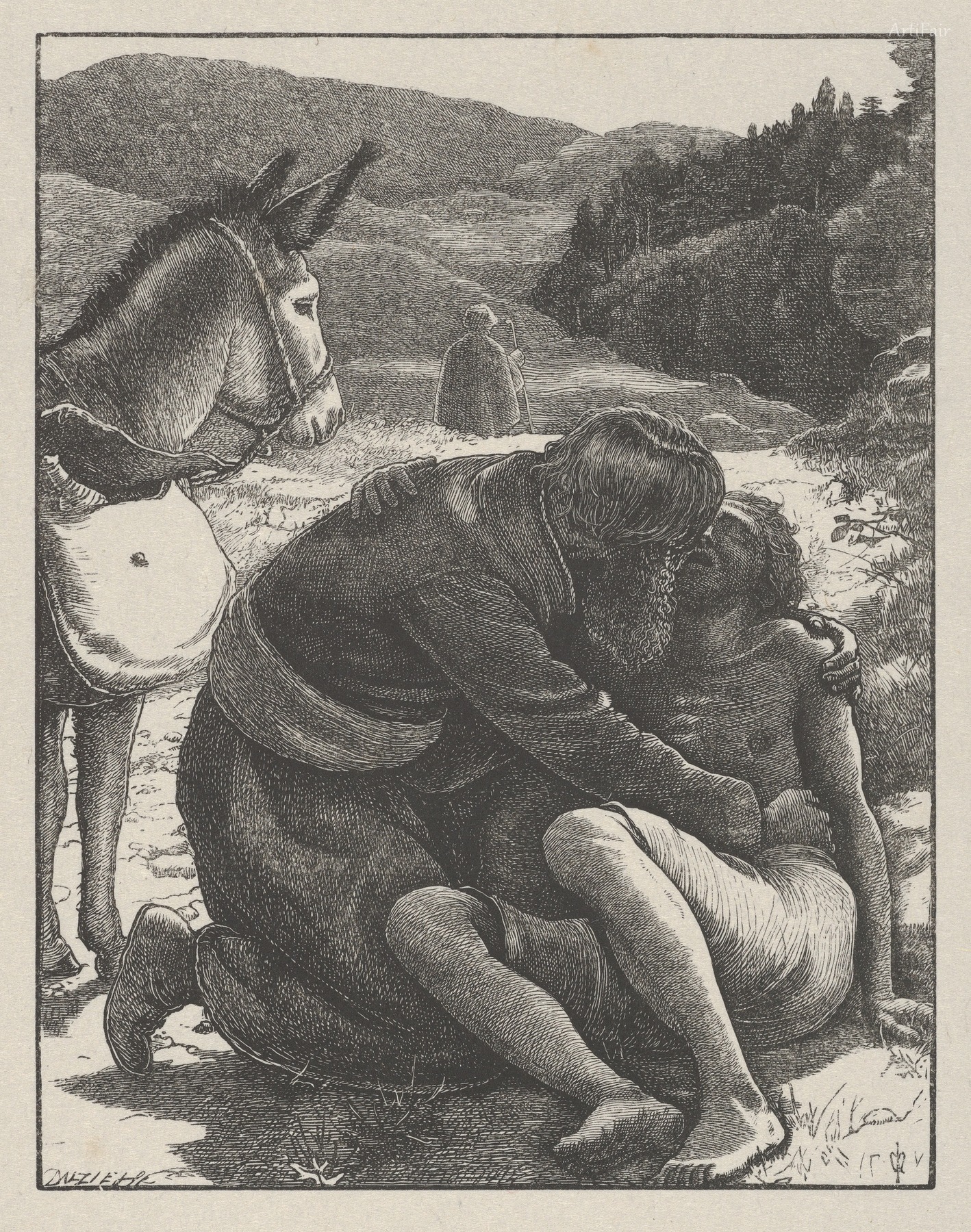
Art Appreciation
This poignant artwork encapsulates the essence of compassion through its vivid depiction of the Good Samaritan, a figure who embodies selfless kindness. The foreground is dominated by the Samaritan, a rugged yet tender man, as he gently cradles a wounded traveler in his arms. The details in the figures are masterfully executed—the Samaritan's weathered face, etched with empathy, contrasts beautifully with the pallor of the injured man's skin, evoking a palpable sense of urgency and care. Behind them, a donkey stands patiently, a silent witness to this act of mercy, while a distant traveler gazes on from a hilltop, perhaps expressing uncertainty or indifference.
The composition is rich with narrative drive: the positioning of the figures leads the viewer’s eye along the gentle slope of the landscape, guiding us through both the physical and emotional journey they endure. Millais employs a muted yet earthy color palette, dominated by browns and greens that evoke a sense of realism without overwhelming the viewer. This choice of colors, paired with the intricate line work, heightens the emotional texture of the scene. As I absorb the details, an air of solemnity envelops me; I’m left contemplating the profound implications of kindness in the face of suffering. The historical context cannot be overlooked either. Created in the mid-19th century, this work reflects the Victorian ideals of morality and social responsibility—meshing beautifully with Millais’s place in the Pre-Raphaelite movement, which championed realism intertwined with emotive storytelling.